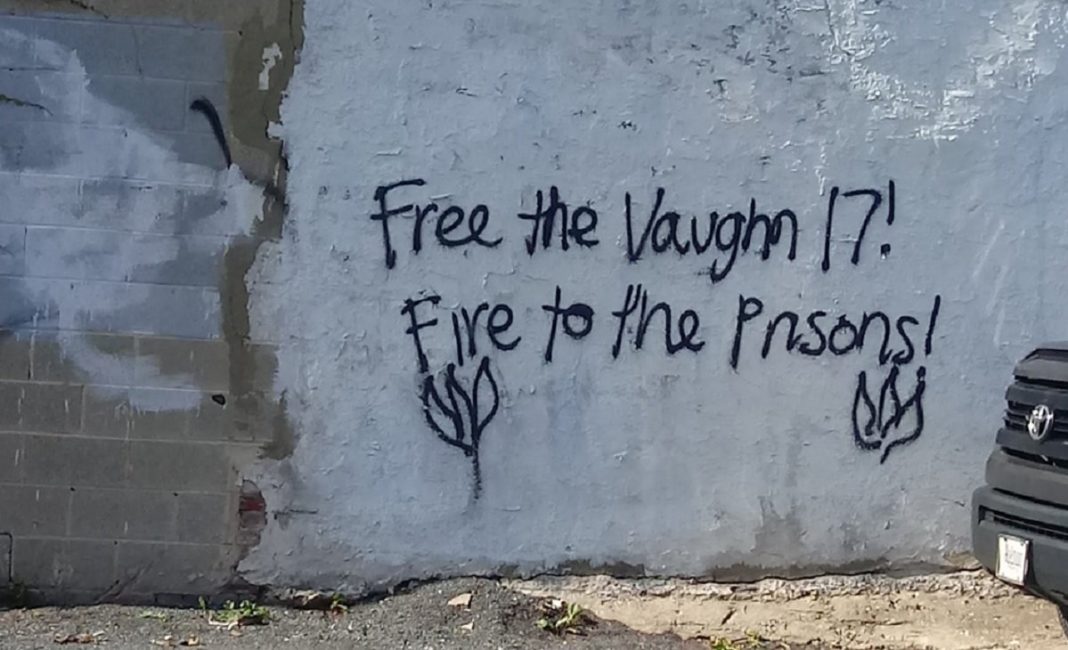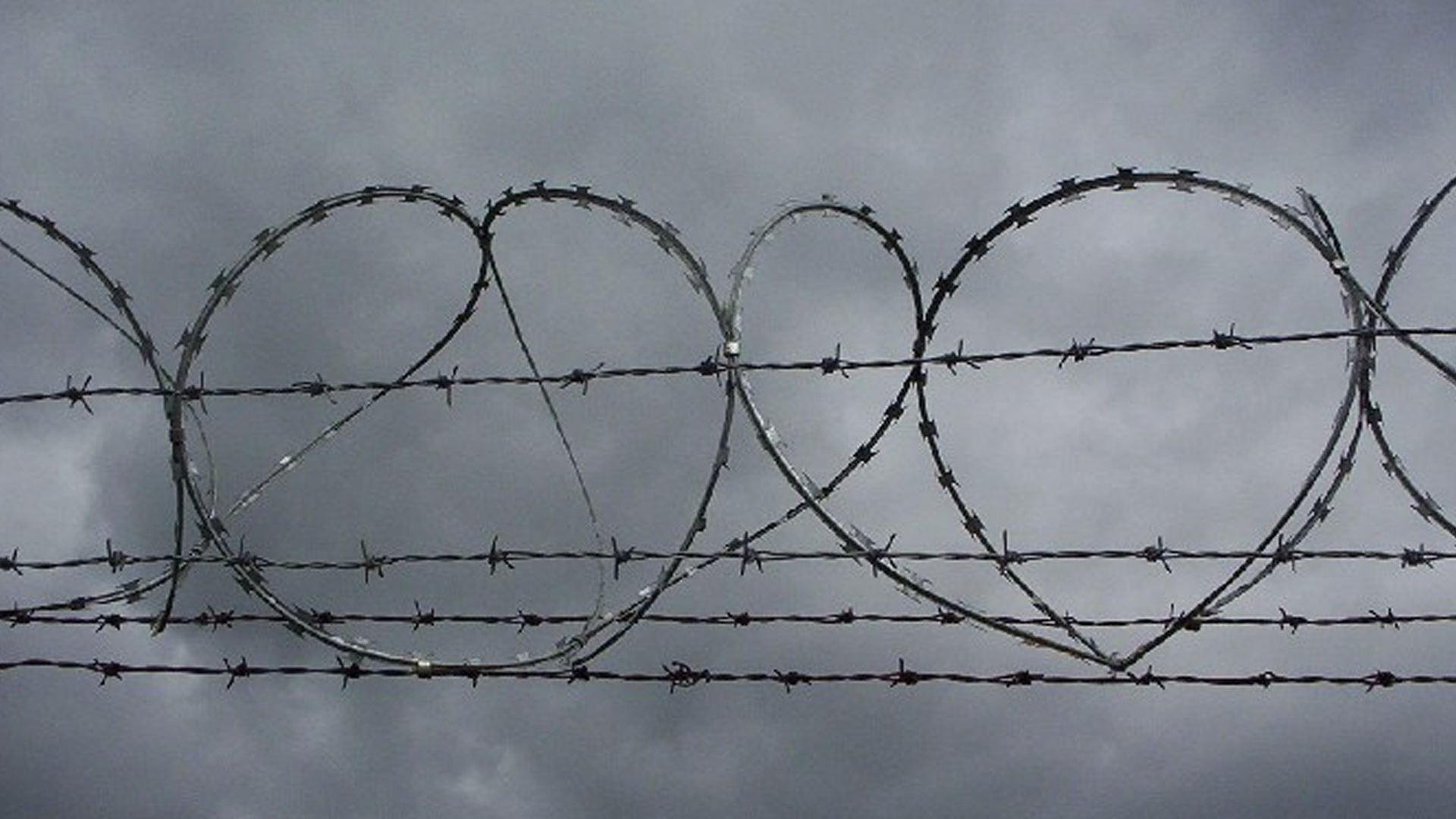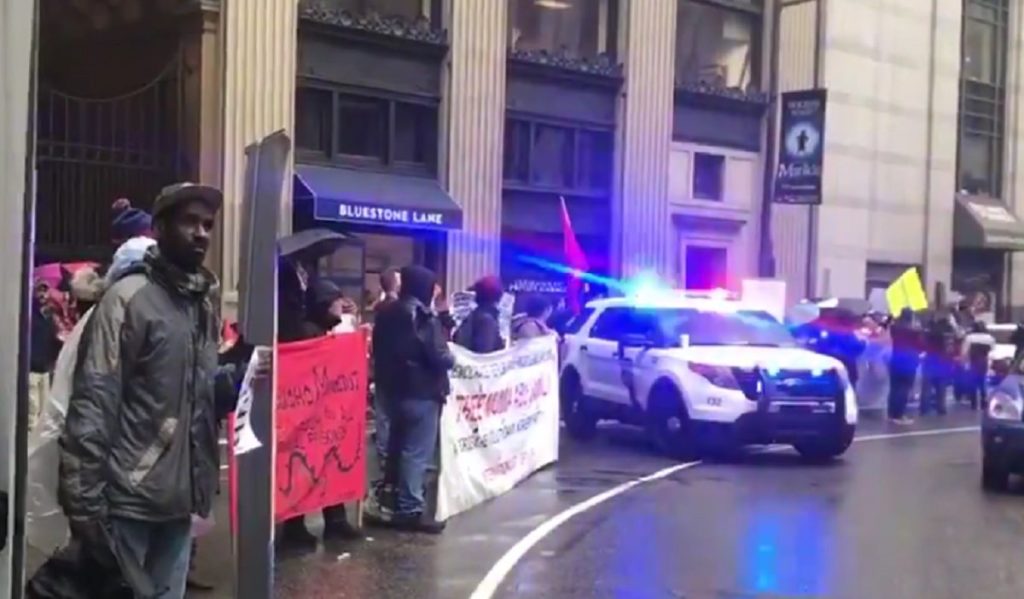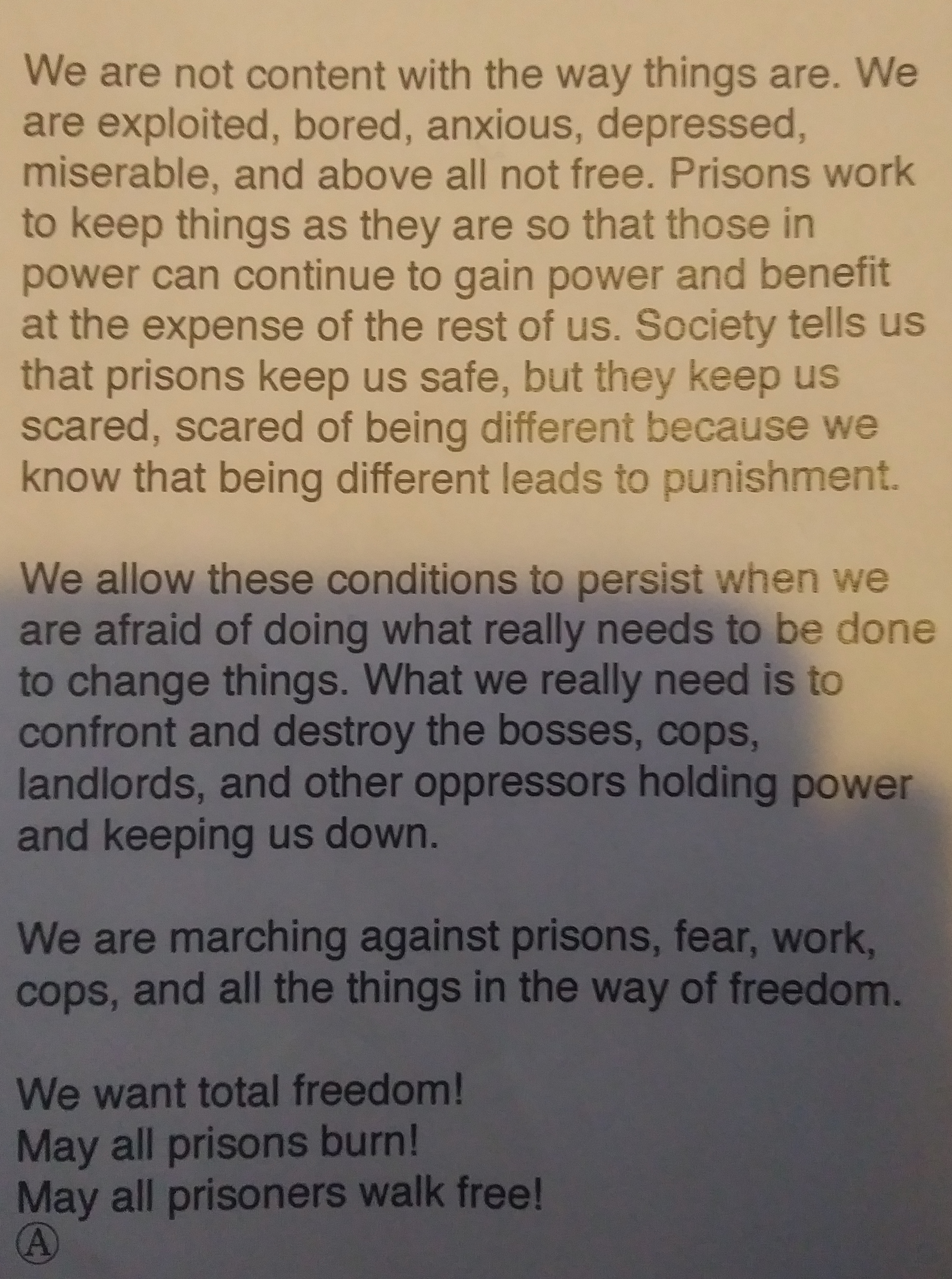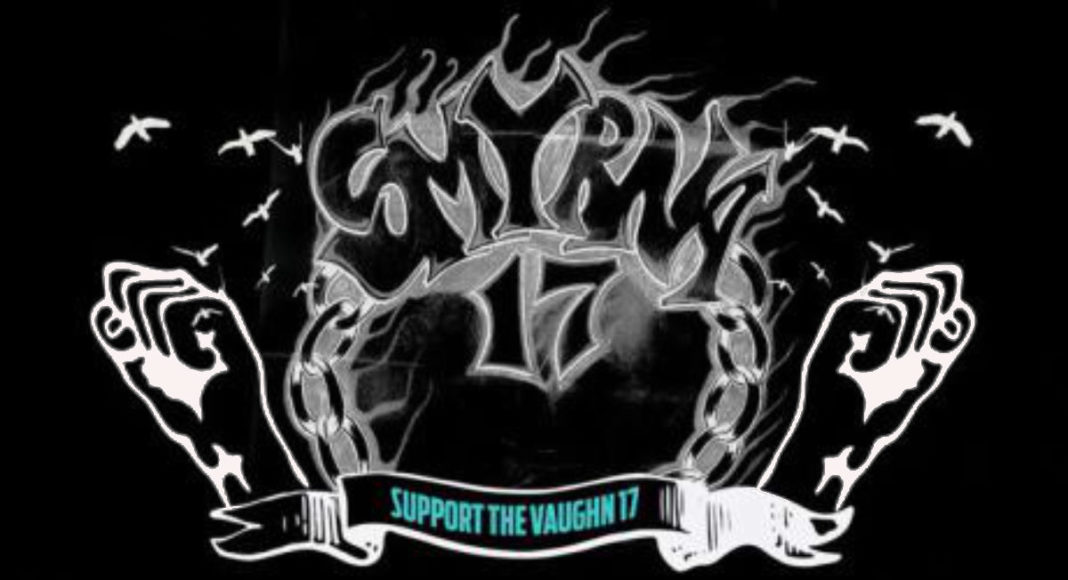Wilmington, DE – On Monday January 14, opening arguments took place in the second trial of prisoners accused of involvement in a prisoner revolt at the James T. Vaughn Correctional Center on February 1, 2017. During the events that were quickly labeled the ‘Vaughn Uprising’, prisoners at Building C at the prison facility in Smyrna, Delaware took over the building and held several guards and a prison counselor hostage while demanding improvements to poor living conditions. The uprising ended the next day with police forcibly retaking the building and with corrections officer Sergeant Steven Floyd found dead in his office.
Prisoners have also filed a lawsuit claiming prison guards systematically tortured and abused them in indiscriminate collective punishment since the uprising took place. In the months after the uprising, 18 prisoners from Vaughn would be indicted on felony charges of murder, assault, kidnapping, riot, and conspiracy.
The first trial of three prisoners accused of involvement in the Uprising concluded late last year. Dwayne Staats and Jarreau Ayers, both prisoners serving life sentences at Vaughn who represented themselves at trial and freely admitted their involvement in events during the uprising, were both convicted on some of the charges brought by the state. Derric Forney, a younger prisoner scheduled to be released in a few years, was found not guilty on all charges despite prosecutors’ insistence that he acted as a “soldier” working under alleged planners of the building takeover.
Letters sent by Staats described how the intention behind the building takeover was to create awareness about abuse and poor conditions at Vaughn. In this respect he wrote, “the trial is an extension of the uprising.” Similar themes appear poised to define the second Vaughn Uprising trial as well.
Opening arguments in the second trial from the State of Delaware, given by Deputy Attorney General Nichole Warner, were nearly identical to those made in the first trial last year. Little evidence was mentioned that pertained to the specific defendants, with the prosecution instead giving a general overview of events on February 1, 2017 and making an emotional appeal over the death of corrections officer Steven Floyd.
The four defendants currently on trial are Abednego Baynes, Kevin Barry, John Bramble, and Obadaiah Miller.
- Baynes is alleged to have been seen participating in the attacks on each of the 3 corrections officers taken hostage that day.
- Barry is accused of being seen “in the group huddled up in the yard” before the uprising took place, and prisoner witnesses for the state reportedly claim he was seen assaulting two corrections officers and had blood on his clothes.
- Bramble is accused of being seen wearing a mask, assaulting one of the COs, and having blood on his hands and clothing.
- Miller is accused of being seen by prisoners with Sergeant Floyd after he was taken hostage, is accused of being seen with a knife, allegedly had blood on his clothes, and prosecutors claim his DNA was found in the mop closet where Sergeant Floyd was kept after he was taken hostage (Floyd was later moved to the Sergeant’s office where his dead body would later be recovered. According to the autopsy by the medical examiner, Floyd did not die from a specific wound and likely would have survived if police had rescued him sooner.)
Defense attorneys for all four prisoners on trial aggressively contested the evidence against their clients in their opening arguments, insisting that the state would not meet its burden to prove guilt beyond a reasonable doubt. Andrew Witherell, representing Kevin Barry, told jurors that “simply because [Barry] is a sentenced inmate…that doesn’t lower his standards” of rights to due process: “the fact that he’s a prisoner does not imply any additional bad will.”
Witherell told jurors that “little, if any” of the evidence they would hear at trial would have anything to do with his client. He also cast doubt on the integrity of investigations by the prosecution, which he said was largely based on incomplete police work done in haste in the immediate aftermath of the prison revolt: “Police wrote a report, rubber stamped [it], and here we are.”
Anthony Figliola, representing Obadaiah Miller, also took shots at Delaware prosecutor’s assertions about his client’s guilt. Figliola told jurors “this whole prosecution is selective” because out of “126 inmates in the C Building…only 18 were charged.” Miller was due to be released in October 2019, Figliola told the courtroom, which cast doubt on his motive to attack prison guards because he “was not one of the guys that had nothing to lose“.
Figliola asserted that the only “direct evidence” against Miller, who is accused of participating in the attack that led to Floyd’s eventual death, is from other prisoners, “individuals who weren’t charged” and therefore have a clear motive to curry favor from prosecutors and prison officials through testimony favorable to the state’s case. He also told jurors about how many of the inmate witnesses had been housed together in the months leading up to trial, creating a scenario where “some of them go back, and they talk to the other inmates, and a plan is formulated” to change their stories.
“Maybe 8 people…had access to that mop room at all times…whose DNA did they look for? One person. That’s what I mean when I talk about selective prosecution.” – Anthony Figliola, defense counsel for Obadaiah Miller
Miller’s lawyer further attacked the assertions that he stabbed Sergeant Floyd, saying that investigators “didn’t find any shank on Mr. Miller“, “didn’t find his fingerprints or DNA on any shanks“, and didn’t find any blood on his clothes. Miller is also accused of being seen wearing a mask during the uprising, which Figliola said doesn’t mean he is guilty since many prisoners were covering their faces to avoid breathing in smoke from fires that had been set inside the building. Figliola also told jurors that Miller’s DNA being found in the mop closet where Floyd was held hostage didn’t mean he was guilty either, since Miller was a “tier man” who was entrusted with a job cleaning the prison facility, meaning that he had regular access to the mop closet, meaning that his DNA could have ended up there as the result of his normal cleaning duties.
Thomas Peterson, defense counsel for John Bramble, began his opening argument with a folk tale about a farmer who finds a snake freezing to death and puts it in his pocket, only to be bitten and poisoned by the snake. He told jurors that the fable illustrated why they shouldn’t trust the inmate witnesses central to the prosecution’s case: “really what this case is going to boil down to…[is] the testimony of snakes from James T. Vaughn…this case is predicated upon the testimony of those inmates.”
Peterson went on to tell the court that “there is not one iota of objective, scientific evidence that points to the guilt of John Bramble” and promised that “you are going to hear a dizzying array of contradictions” in the evidence provided by the state. Bramble’s lawyer also challenged jurors to reflect on whether it was truly possible for them to give a fair trial with the presumption of innocence “to someone who’s already in jail”, asking them “Would you be satisfied with this same quality of prosecution…if Mr. Bramble were the valedictorian of the charter school?”
Peterson said that Bramble deserved “to be prosecuted based on quality evidence” and denounced the prosecution’s evidence as having “no dignity” and providing “a lack of dignity to Sergeant Floyd” by not adequately investigating the circumstances surrounding his death. Characterizing the Delaware Attorney General’s work on the Vaughn Uprising case as a “throw everything up against the wall and hope something sticks approach“, Peterson told the jury that “an inmate doesn’t come to court and testify unless he wants something in return.”
After the first three defendants made opening arguments, Judge William Carpenter told the state to call their first witness, and had to be reminded that he had forgotten entirely about Abednego Baynes, the fourth defendant on trial in his court. Baynes is represented by attorneys Saagar Shah and Cleon Cauley, whose opening argument alleged that the state made a “snap judgement” after the uprising and that the case against their client is based on that snap judgement rather than proper evidence. “My client was put on a list early in this process,” Cauley told the court, asking jurors to “question everything” and to look out for missing or contradictory evidence in the state’s case. Like other defense counsel, Cauley insisted that “little, if any” of the evidence to be presented at trial would implicate Abednego Baynes.
The case brought by the Delaware Attorney General, like their case in the first trial, depends on accounts by cooperating inmate witnesses, many of whom have given contradictory statements and live at the mercy of prison officials who will be watching their testimony with interest.
Testimony by inmate witnesses is also expected to be used as evidence in a lawsuit on behalf of prisoners housed at Vaughn. The lawsuit, which is being brought by Delaware attorney Stephen Hampton, alleges a deliberate policy of “ongoing abuse” and “ubiquitous torture” of prisoners. Hampton also noted that three suspicious deaths of Vaughn prisoners since the February 2017 uprising have been dismissed by state officials as unrelated to any foul play by prison staff. In the first Vaughn trial last year, several inmate witnesses for the state testified about being violently abused by prison guards and police in the immediate aftermath of the uprising.
The second Vaughn Uprising trial, like the first, is scheduled to last over a month, with weeks of witness testimony from corrections officers and inmate witnesses. 11 other prisoners indicted for their alleged role in the uprising are scheduled to go to trial later in 2019.
Title photo credit: Tomasz Kuran aka Meteor2017, via Wikimedia Commons

Unicorn Riot’s Coverage of the Vaughn Uprising trials:
